Occupational safety training for operating air compressors
99,000 ₫
Note: The price above is calculated for one person, and it may vary depending on the number of participants in the training course and market fluctuations. For more accurate pricing support, please refer to the quotation table or contact our consulting staff directly.
Occupational safety is an important issue when operating air compressors and must be addressed promptly to ensure the health and safety of workers while enhancing the reputation of businesses. The Occupational Safety Training course is one of the effective solutions to raise awareness about preventing workplace accidents for workers when operating air compressors.
Table of Contents
Toggle1. Overview of Air Compressors
a. What is an air compressor?
An air compressor is a device used to compress air from the surrounding environment to a higher pressure. This compression process helps create a stable supply of compressed air with consistent pressure and flow, which is used in a variety of industrial and commercial applications. Air compressors can operate in various ways, including using pistons, screws, gears, or other technologies to compress air.
Air compressors come in various types and sizes, ranging from compact units for household use to large industrial compressors capable of powerful and continuous air compression. These types of compressors have different designs and features to suit specific application needs.

b. How an air compressor works
The working principle of an air compressor is based on increasing the pressure of air by compressing it. This process is carried out through the following basic steps:
- Air Intake: The compressor draws air from the surrounding environment through an intake valve. The air is usually drawn into a chamber or cylinder.
- Air Compression: After intake, the compressor begins compressing the air. This process is typically performed using one or more pistons or rotating screws. As the piston moves up and down or the screw rotates, the pressure in the chamber rises, compressing the air.
- Oil and Water Separation (if needed): In some cases, compressors may also need to separate oil and water from the compressed air. This is usually done with specialized filters and separators.
- Compressed Air Storage: Once compressed to the desired pressure, the air is stored in a pressure tank. This tank helps balance the pressure and provides a stable supply of compressed air.
- Using Compressed Air: Compressed air can be used in various applications, including powering tools and equipment, cooling, drying, and many industrial processes.
- Pressure Reduction (if needed): Before use, the pressure of compressed air is often reduced to ensure it meets the specific requirements of the equipment or application.

c. Industries that use air compressors
Air compressors are used in many different industries. Some key industries where compressors play an important role include:
- Automotive Industry: Compressors provide compressed air for tools and equipment used in car manufacturing, including painting, tire inflation, and other processes.
- Food & Beverage Industry: In this industry, compressors are used to transport food products, package food with gas, and cool production processes.
- Chemical Industry: Compressors are essential in chemical production, including chemical processes and packaging.
- Oil & Gas Industry: Compressors are used in oil and gas production, including drilling and product testing.
- Electronics Industry: In manufacturing electronic components and circuit boards, compressors are used for cleaning and blowing air onto components.
- Metal Industry: Compressors supply air for metal cutting, welding, and other processes in metal production.
- Wood & Furniture Industry: In woodworking and furniture production, compressors power tools and machinery such as sanders, chisels, and cutting machines.
- Paper Industry: Compressors help control and maintain paper production processes, including cleaning and aerating materials.
- Textile Industry: Compressors supply air for sewing machines and other equipment during fabric and garment production.
- Aquaculture & Seafood Processing: In seafood production, compressors are often used to supply air to water treatment systems and provide oxygen for fish ponds.
2. Overview of Safety Training for Air Compressor Operation
a. What is occupational safety training?
- Occupational safety training for air compressor operation consists of courses that provide awareness and knowledge about preventing workplace accidents. Workers who operate directly with air compressors fall under Group 3.
- The training helps workers identify and avoid hazards, reducing the risk of workplace accidents during operation.
REGISTER FOR OCCUPATIONAL SAFETY TRAINING SERVICE
b. Training Duration
Initial safety training duration:
- Total training time is at least 24 hours, including test time.
- 8 hours of theory on safety policies and labor hygiene laws
- 8 hours of theory on basic occupational safety and hygiene knowledge
- 4 hours of theory on specialized training content
- 2 hours of practical training on specialized content
- 2 hours of final theoretical test
The training center will schedule multiple sessions depending on the availability of workers. Typically, there are 6 sessions over 3 days if the company can arrange continuous training.
Periodic safety training:
- Before the occupational safety card expires, workers must complete periodic occupational safety training for renewal, with a training duration of at least 50% of the initial training.
Explanation: The total periodic safety training time is at least 12 hours, including test time. After completing the periodic training and passing the test, the worker will receive a renewed safety card.
c. Training Content
| No. | TRAINING CONTENT | TRAINING DURATION (HOURS) | |||
| Total | Including | ||||
| Theory | Practice | Test | |||
| I | Safety policies and occupational hygiene laws | 8 | 8 | 0 | 0 |
| 1 | Overview of legal documents on occupational safety and hygiene. | 6 | 6 | ||
| 2 | Standards and technical regulations on occupational safety and hygiene. | 1 | 1 | ||
| 3 | Specific regulations by state management agencies regarding occupational safety and hygiene when constructing, expanding, or renovating facilities, including machines, equipment, materials, and substances with strict safety requirements. | 1 | 1 | ||
| II | Basic knowledge of occupational safety and hygiene | 8 | 8 | 0 | 0 |
| 1 | Basic knowledge about workplace hazards and harmful factors. | 4 | 4 | ||
| 2 | Methods to improve working conditions. | 1 | 1 | ||
| 3 | Safety culture in production and business. | 1 | 1 | ||
| 4 | Rights and obligations of employers and employees; policies and regimes on occupational safety; functions and duties of safety networks. | 1 | 1 | ||
| 5 | Safety rules, signage, use of safety equipment, personal protective equipment; first aid skills; occupational disease prevention. | 1 | 1 | ||
| III | Specialized training content | 6 | 4 | 2 | 0 |
| Comprehensive knowledge of machinery, equipment, substances causing hazards; risk analysis, evaluation, and management of occupational safety; safe procedures with machines, equipment, and substances with strict safety requirements. | 6 | 4 | 2 | ||
| IV | Final safety training test | 2 | 2 | 0 | 0 |
| Total | 24 | 22 | 2 | ||
See more training content for 6 groups
d. Occupational safety card
After completing the occupational safety training and passing the test, workers will be issued an occupational safety card (commonly called Group 3 safety certificate).
The Group 3 card shows personal details such as name, date of birth, job, and working environment, along with training duration, official stamp, and signature confirming course completion.
According to regulations in Clause 2, Article 24, Decree 44/2016/ND-CP, there are 2 cases:
- If the employer and employee have a labor contract, the employer must sign and stamp the card for the Group 3 worker after training and passing the test.
- If the worker is freelance or seasonal, without a labor contract, the training unit must sign and stamp the card after the worker completes training and passes the test.

3. Hazards When Operating Air Compressors
Operating air compressors requires careful attention and strict adherence to safety rules to prevent hazards. Below are some common hazards when operating air compressors:
- Explosion and Safety Incidents: If the air compressor operates incorrectly or there is a system failure, there is a risk of explosion due to high compressed air pressure. This can cause serious injuries or even death. Ensure the compressor and compressed air system are properly maintained and meet safety standards.
- High Pressure: Air compressors generate high pressure. Working near pipes or equipment can be life-threatening if a malfunction occurs.
- Noise and Vibration: Air compressors often produce noise and vibrations, which can harm workers’ health if ear and eye protection is not used. Noise and vibration control measures should be applied.
- Oil and Compressed Air Lubricants: Compressors often use oil for lubrication and cooling. Oil leaks or contact with compressed air oil can cause environmental contamination or fire hazards.
- Temperature: Excessive temperature in the compressor system can cause oil overheating or fire. Ensure proper cooling and temperature management.
- Electrical System: Air compressors use high-voltage electricity. Risks of electric shock and fire must be managed.
- Maintenance and Periodic Checks: Neglecting maintenance can lead to malfunctions or fire hazards. Regular inspection and maintenance ensure safe and effective operation.
- Compressed Air Pressure Failures: A failure in the compressed air system can result in energy loss and endanger nearby workers. Ensure safety devices are installed to control pressure failures.
- Pneumatic Piping System: Pipes and compressed air lines should be inspected regularly to prevent leaks or failures.
To ensure safety when operating air compressors, workers must be fully trained on safety rules, and the compressed air system must be maintained and inspected regularly.

4. Measures to Prevent Occupational Accidents When Operating Air Compressors
To control and prevent occupational accidents when operating air compressors, the following safety measures can be implemented:
- Training and Awareness: Ensure all employees operating air compressors are fully trained on how to use the equipment, safety procedures, and awareness of related hazards. This includes understanding safety symbols and instructions.
- Periodic Inspections: Regular inspection of air compressors to detect safety issues early, such as mechanical wear or damage, reducing the risk of occupational accidents.
- Follow Safety Rules: Adhere to safety rules when operating compressors, including using PPE such as safety glasses, ear protection, gloves, protective clothing, and safety shoes. This helps protect workers from injuries and contamination.
- Noise Control: Use ear protection to reduce noise from air compressors. This protects workers’ hearing.
- Pressure Control: Monitor system pressure and ensure it does not exceed safe limits. Use safety devices to prevent pressure-related incidents.
- Air Quality Monitoring: Ensure air in the system is free from dust, oil, or harmful substances. Use filters and oil separators if needed.
- Compressed Air Oil Management: Ensure compressed air oil is used and stored correctly. Regularly check systems to prevent leaks or fire hazards.
- Access Control: Limit access to the compressor area for untrained personnel or unauthorized individuals. This prevents unnecessary interference.
- Use Safety Signage: Display safety signs and instructions to inform workers of hazards and preventive measures.
- Emergency Handling: Train staff on handling incidents and fires, including using fire extinguishers and other necessary rescue measures.

5. Benefits of Occupational Safety Training
Nam Viet Safety provides your business with the following benefits after completing occupational safety training courses in accordance with Decree 44/2016/ND-CP on labor safety and hygiene for companies, factories, and enterprises:
- Workers can identify potential occupational hazards and take preventive measures to avoid workplace accidents.
- Your business can establish risk prevention measures in production, operation, and maintenance processes.
- Reduce costs associated with workplace safety risks.
- Continuous production helps increase labor productivity and product quality.
- Comply with labor safety regulations, avoiding legal risks.
- Enhance credibility and professionalism in all aspects, thereby elevating your company’s brand value.
Nam Viet’s training courses provide solutions to prevent external hazards from affecting individuals, helping them avoid dangers that could lead to injury or even death.
REGISTER FOR OCCUPATIONAL SAFETY TRAINING SERVICE
6. Customer Feedback After Completing Training
Nam Viet Safety has many years of experience supporting businesses across Vietnam, especially in the southern provinces. This responsibility is highly valuable, which is why our Occupational Safety Training programs are increasingly professional. Our growth is motivated by positive feedback and suggestions from the businesses we serve. Below are some testimonials from our partners.
Bac Nam E&C Investment Construction Joint Stock Company
“My first experience with Nam Viet Safety surprised me with their 24/7 dedicated support from the consulting team. Class organization was fast and convenient for our company. Thank you very much for Nam Viet’s service!”
Hoa Dat Construction and Trading Joint Stock Company
“Nam Viet’s service greatly helped us simplify labor safety and complete safety documentation for our operations. The consulting team was enthusiastic and timely in answering our questions. 5 stars for Nam Viet.”
See more customer interviews after using Nam Viet Safety services
7. Nam Viet Safety Training Capability
Nam Viet Safety is a reputable and high-quality occupational safety training center in Vietnam. Our safety training sessions are continuously conducted at production workshops, factories, or construction sites nationwide (all 63 provinces).
REGISTER FOR OCCUPATIONAL SAFETY TRAINING SERVICE
Occupational Safety Training License
- Nam Viet Safety is certified by the Department of Labor Safety – Ministry of Labor, Invalids and Social Affairs and granted a certificate to conduct occupational safety and hygiene training, further strengthening our training capacity.

Training Materials and Lectures
- Training materials are reviewed and approved before being used in occupational safety training courses to ensure accuracy and effectiveness.
- Instructors follow standardized teaching methods set by Nam Viet Safety, developed by experts to maximize knowledge absorption.
Facilities
- Classroom environment is controlled to optimize training efficiency and knowledge absorption.
- Our training facilities offer spacious classrooms that meet standards for size, lighting, and equipment.
8. Nationally Reputable Safety Training Center
At Nam Viet Safety, occupational safety training is our top professional priority. Teaching workers how to protect themselves contributes to nation-building.
We carefully prepare every detail for effective training, including tools, equipment, teaching materials, sound, and lighting.
Our instructors are experts with years of experience and research on hazard identification across industries and preventive measures.
Lectures are practical, engaging, and easily understandable, helping workers learn comfortably, always aligned with Decree 44/2016/ND-CP.
This equips trainees with hazard prevention knowledge and self-protection measures applicable to real work situations.
Our training center provides reputable, professional safety training services with advantages:
- Competitive costs with ensured quality.
- Flexible training schedules matching company operations.
- Fast and compliant certification procedures.
- Experienced instructors.
- Optimized classroom environments for effective teaching and learning.
- Tailored lectures for occupational safety in enterprises.
- Dedicated and professional customer support.

9. Additional Occupational Safety Training Resources
- Occupational safety materials for operating air compressors
- Occupational safety training materials
- Occupational safety training test sets
- Multiple-choice test on occupational safety when operating air compressors
- Slides for occupational safety training on operating air compressors
10. Occupational Safety Training Activities for Operating Air Compressors
- OMNICOMM VIETNAM CO., LTD
- WINTON MANUFACTURING CO., LTD
- PHO NOI TEXTILE INFRASTRUCTURE DEVELOPMENT JSC
- CENTER FOR TESTING, CERTIFICATION AND QUALITY SERVICES
- JAGUAR IMPORT EXPORT TRADING SERVICE CO., LTD
- JIA HUA TIEN GIANG CO., LTD
- KON TUM WATER SUPPLY JSC
- HUNG HAU AGRICULTURE JSC
- TOI NGUYEN CONSTRUCTION AND TRADING ONE-MEMBER LLC
- HOANG MINH HUY MANUFACTURING AND TRADING CO., LTD
- AN TAM CONSTRUCTION AND TRADING CO., LTD (Project in Binh Duong)
1 review for Occupational safety training for operating air compressors
No comments yet

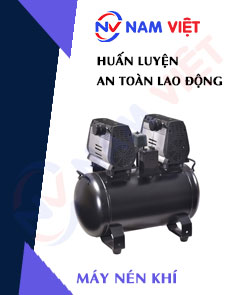
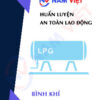
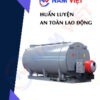



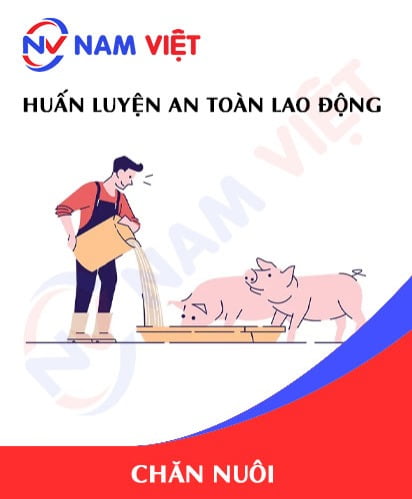
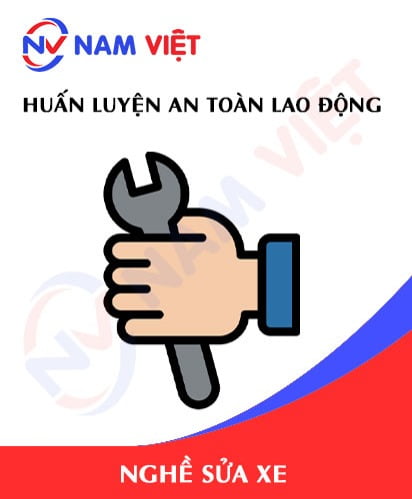




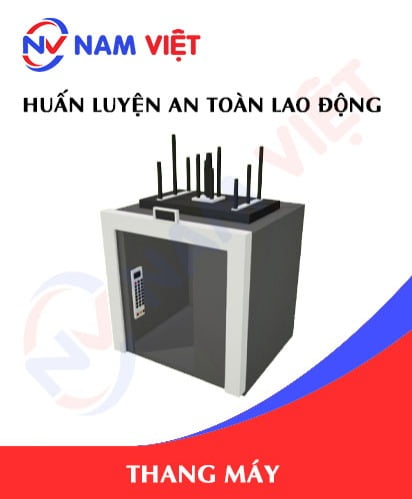

phanminhhang341
Dịch vụ tốt!!!